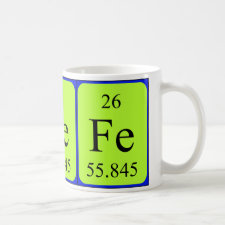
Authors: Yavuz H, Say RI, Denizli A
Article Title: Iron removal from human plasma based on molecular recognition using imprinted beads.
Publication date: 2005
Journal: Materials Science and Engineering: C
Volume: 25
Issue: (4)
Page numbers: 521-528.
DOI: 10.1016/j.msec.2005.04.005
Abstract: The aim of this study is to prepare ion-imprinted polymers which can be used for the selective removal of Fe3+ ions from Fe3+-overdosed human plasma. N-Methacryloly-(l)-glutamic acid (MAGA) was chosen as the complexing monomer. In the first step, Fe3+ was complexed with MAGA and the Fe3+-imprinted poly(HEMA-MAGA) beads were synthesized by suspension polymerization. After that, the template (i.e., Fe3+ ions) was removed using 0.1 M EDTA solution. The specific surface area of the Fe3+-imprinted poly(HEMA-MAGA) beads was found to be 76.4 m2/g with a size range of 63-140 μm in diameter and the swelling ratio was 75%. According to the elemental analysis results, the beads contained 84.7 μmol MAGA/g polymer. The maximum adsorption capacity was 92.6 μmol Fe3+/g beads. The relative selectivity coefficients of imprinted beads for Fe3+/Zn2+ and Fe3+/Cr3+ were 17.3 and 48.6 times greater than non-imprinted matrix, respectively. The Fe3+-imprinted poly(HEMA-MAGA) beads could be used many times without decreasing their adsorption capacities significantly
Template and target information: iron, ferric ions, Fe(III)
Author keywords: molecular imprinting, molecular recognition, iron removal, metal detoxification, affinity binding



Join the Society for Molecular Imprinting

New items RSS feed
Sign-up for e-mail updates:
Choose between receiving an occasional newsletter or more frequent e-mail alerts.
Click here to go to the sign-up page.
Is your name elemental or peptidic? Enter your name and find out by clicking either of the buttons below!
Other products you may like:
 MIPdatabase
MIPdatabase









